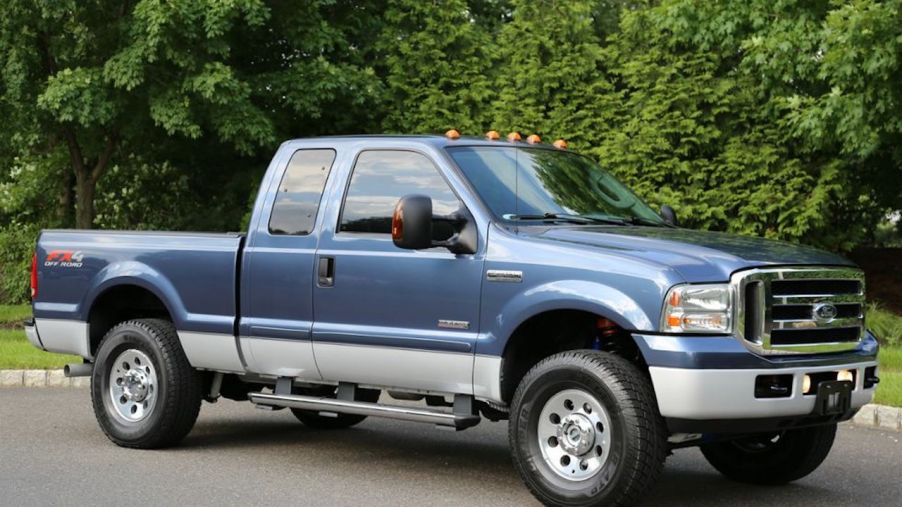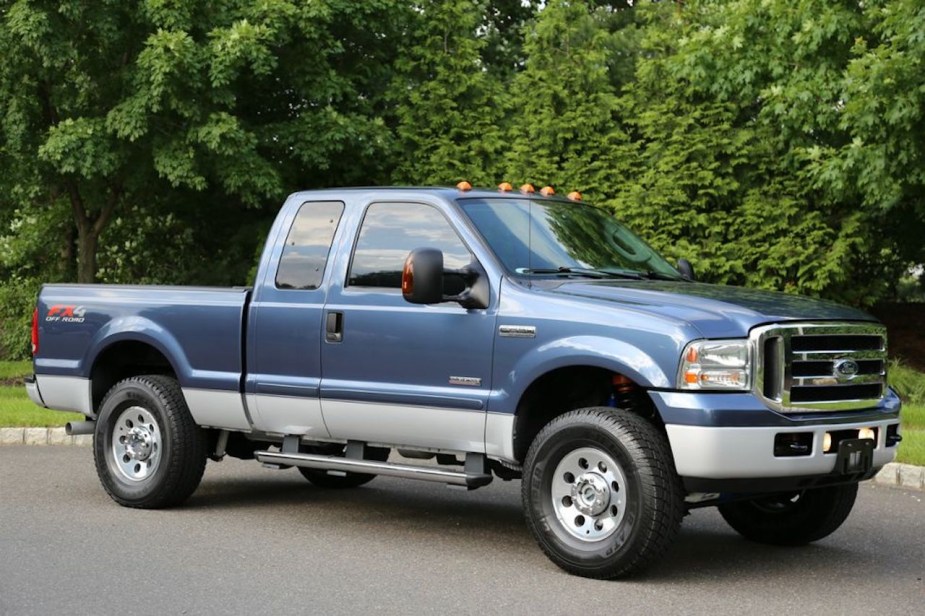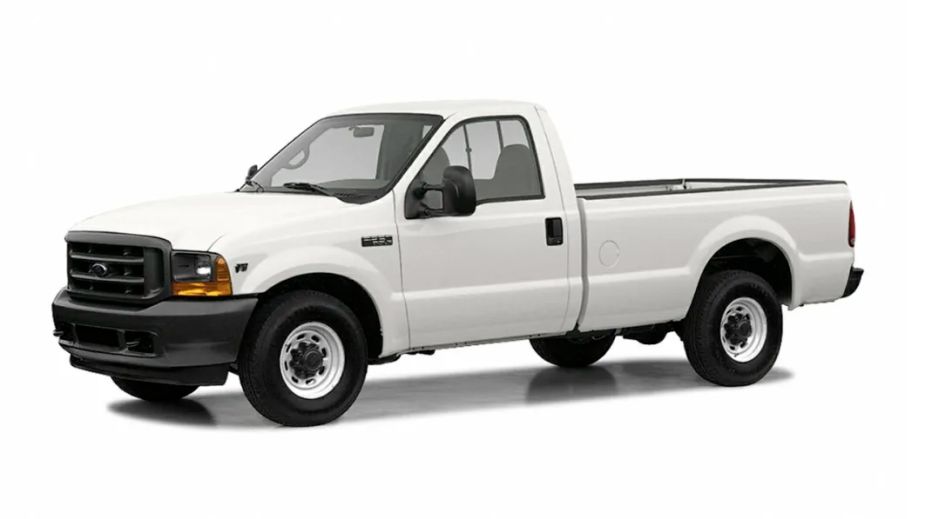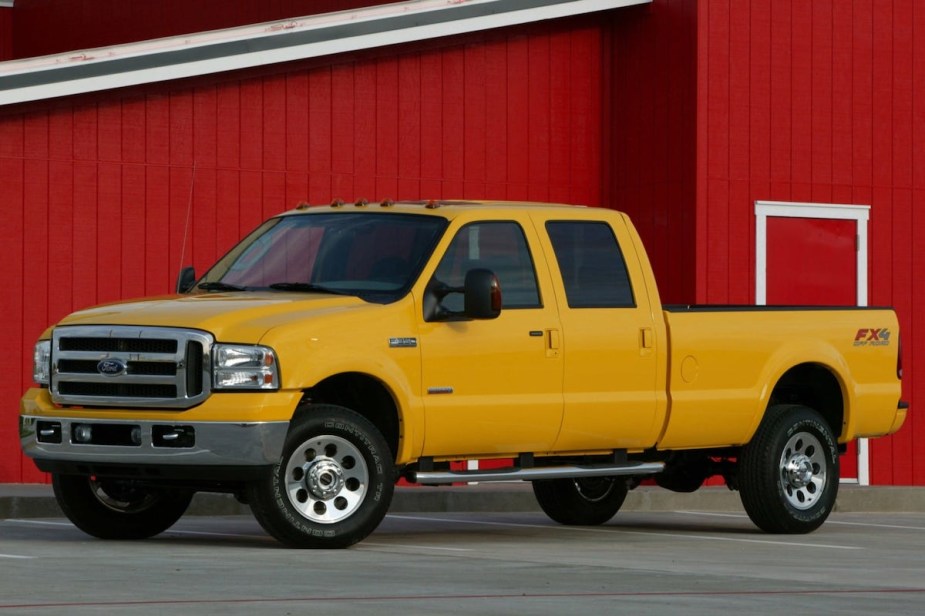
8 Flaws That Will Destroy Your Ford 6.0-Liter F-250 Diesel Engine
We’ve dipped into the problems associated with Ford’s 24-valve 6.0-liter Power Stroke diesel engine, found in both F-250 and F-350 trucks. They were manufactured from 2003 to 2007 in both trucks, but also the E-series vans from 2003 to 2010. The engine cost Ford hundreds of millions of dollars in lawsuits and warranty repairs. Earlier, we hit on the top three causes of catastrophic damage that can occur with these engines. But there are really a number of issues, some related, that lay havoc on the F-250 diesel engine. Here are the top eight problems to be aware of.
F-250 6.0-liter cylinder head bolts
When Ford designed the 6.7-liter and 7.3-liter Power Stroke diesel engines, it chose to use six head bolts for each cylinder. That’s because of the issues faced with the 6.0-liter and its four-bolts per cylinder failures. Even Navistar’s two diesel engines for its medium series used five. With over boost, the engine can blow a head gasket. From there, the cylinder head can crack.
Some of this can be attributed to failed EGR systems, which we’ll cover. If there is a restriction in the EGR valve or the system, the engine runs hotter. This can lower the head bolts’ yield, and can also contribute to warped cylinder heads.
F-250 6.0-liter turbocharger issues

These engines were originally designed by Navistar with variable vane turbochargers. Ford reconfigured them to series sequential turbochargers or VGT, to reduce turbo lag. This meant there were two turbos in the system. Once the turbo starts going bad, it can act like a bad EGR valve according to Dieseliq. Carbon or rust buildup can cause an over-boost situation. There have been many bearing failures that spit chunks of bearing into the cylinders, potentially causing catastrophic damage.
6.0-liter fuel injectors
Fuel injectors can fail for a number of reasons. The FICM controlling the injectors can go bad, and dirt in the oil, low fuel pressure, or electrical issues can happen. Because injector issues can begin showing up during cold starts, hard starting is one sign. Also a rough idle and black or gray exhaust smoke. Usually, once the engine is warm, the problems will seem gone, but not really. Should this be occurring, the injectors need to be cleaned or replaced.
High-quality fuel and additives can help avoid fuel injectors becoming clogged. But these engines also have a problem with stiction, where a combination of static and friction combine to cause this issue. Many engines, not just the 6.0-liter, can have this happen if using HEUI-type injectors. And when this does occur, it usually happens in pairs. There are additives like Stiction Eliminator that can help.
F-250 6.0-liter fuel injection control module

Problems with the FICM will have similar actions to bad fuel injectors. Hard starting, rough idle, and loss of power. It is easy to replace, but make sure you use the IDS scan tool to capture the programming from the bad module and reprogram the new FICM and PCM.
6.0-liter EGR valve failures
The EGR valve controls exhaust gas into the intake manifold to cycle a second time to reduce emissions. Because it is electronically controlled and is positioned for the hot exhaust to pass through it, electrical failures are common. Carbon buildup is also a problem. Black exhaust, loss of power, hard or no start, and unusual noises are some common results. Keeping the valve clean at every oil change can lessen the potential for problems.
F-250 6.0-liter oil cooler issues
Most of the 6.0-liter problems can be traced to the oil cooler. Silicone sand from casting the blocks will usually clog up the oil cooler. Being clogged, the oil temperature rises and degrading oil rings, gaskets, and the EGR cooler can result. Regularly changing your oil, and even adding a secondary filter to the oil line can reduce your chance of having failures from this.
F-250 EGR cooler issues

The EGR cooler cools down the exhaust to prepare it for a second shot into the intake manifold for emissions reduction. Carbon buildup, as with the EGR valve, can also cause the EGR cooler to clog and ultimately fail. Failure causes coolant to get into the heads, which can ultimately cause hydro lock and catastrophic engine failure. To lessen the possibility of this happening, replace your 2004 to 2007 EGR cooler with one for a 2003 engine. They’re round, while the later ones are square.
High-pressure oil system
Another big issue with the 6.0-liter diesel Super Duty is high oil pressure. Failed O-rings from the pressure can lead to higher oil consumption. Ford also used snap-to-connect fittings which have a 100 percent failure rate. These fittings were used from 2005 to 2007 for 6.0-liter engines. If you have these fittings, replace them. It’s not a matter of if but when they’ll finally fail.



